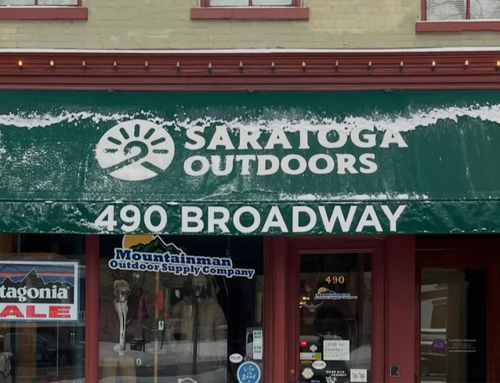New York State lags significantly behind many other states in the U.S. for control and management of aquatic invasive species (AIS). Over the last few years, New York has lost ground in the campaign to stop the spread of AIS. Bold measures are needed by the Cuomo Administration and the NYS Department of Environmental Conservation (DEC) to combat AIS and protect New York’s waters.
The time for action is now. Upstate New York is often cited as an economically depressed area. Yet Upstate is an area rich in incredible lakes, ponds and rivers. The water quality of Upstate New York is vital to the local economies and supports a number of businesses, resorts, vacation homes, and high property values. AIS can rapidly change the ecology of a lake, wetland, pond or river as well as significantly impair and seriously diminish recreational enjoyment. The Cuomo Administration and DEC need to make a much greater investment in combatting AIS in order to protect the Upstate economy, environment and quality of life.
See a letter from PROTECT here. See a press release here.
Comprehensive statewide action is vital because in New York we still have places like the Adirondack Park where the majority of the major lakes remain un-infested with AIS. Unlike most of the rest of New York, most of the major lakes and ponds in the Adirondacks remain free of AIS, but the numbers of infested lakes continues to grow. According to the Adirondack Park Invasive Plant Program (APIPP), 94 Adirondack lakes are infested with 11 different AIS and it is believed that 16 lakes have two or more. Prospects for eradication of AIS from these infested waters are minimal.
As more lakes become infested with AIS costs of control efforts rise. AIS control is very expensive, often beyond the means on lake associations, local governments and limited funding from the Environmental Protection Fund (EPF). Prevention and interdiction are far less expensive and will do much more to control the spread of AIS than the combined control and management efforts underway across New York.
The recent costs of unsuccessful control efforts on Lake George for the Asian clam (Corbicula fluminea) and for hydrilla (Hydrilla verticillata) on Cayuga Lake show the high costs of control efforts. Given this reality, New York needs to significantly improve its AIS prevention and interdiction infrastructure.
Protect the Adirondacks urges the Cuomo Administration and DEC to embrace a 5-point plan to significantly boost New York’s ability and effectiveness to prevent the spread of AIS. All of these measures have been successfully implemented in other states and have proven highly effective.
Motorboats Spread AIS: The Time is Now for new Programs for Mandatory Inspection and Decontamination of Motorboats
The main vector for spreading AIS throughout the Adirondacks and New York is the transport of motorboats for public recreation. Thousands of boats are brought to the Adirondack Park each year for public recreation for use on Adirondack Park lakes, ponds, and rivers. AIS attach to the engines, hulls, and trailers, among other places, and are carried from one lake to another. In juvenile stages, microscopic AIS animals, such as Asian clams, quagga mussels (Dreissena bugensis) and spiny water flea (Bythotrephes longimanus), are transported in standing ballast waters, engine water and in live wells and bait buckets.
Lake George and Lake Champlain were the first lakes infested with Eurasian watermilfoil (myriophyllum spicatum) and curly leaf pondweed (Potamogeton crispus) in the 1980s. Their high popularity and high boat traffic, combined with the weak control efforts, resulted in spreading Eurasian watermilfoil throughout the Adirondacks.
This same dynamic is at play once again, though the species have changed. The Asian clam and spiny water flea infestations in Lake George raises the likelihood that this invasive species will be transported from Lake George to other lakes and ponds throughout the Adirondacks. In Lake Tahoe, the Asian clam infestation has resulted in transforming once blue and sandy beaches into places littered with clams shells and often covered with thick wads of algae. We cannot let this happen in the Adirondacks.
Throughout the Adirondacks and New York, mandatory boat inspection and decontamination programs should replace voluntary public education programs that have been managed at dozens of boat launches around the Adirondacks and Lake Champlain. These programs are beneficial, but do not involve more intensive inspection protocols linked to decontamination facilities. It’s time to transition these public education programs, based largely on voluntary visual inspections of boats and education of boat owners, to a mandatory inspection and decontamination program. While most boat owners are supportive of AIS prevention, not all are. Furthermore, some of the most venal and destructive AIS are transferred as microscopic veligers or juveniles in the live wells, ballast and engine water. Only a systematic inspection and decontamination program can guard against these threats.
Two of the newest AIS to invade Lake George, Asian clams and spiny water flea, arrived despite active voluntary public education efforts in operation at major boat launches. One of the major boat launch sites, with a robust public education effort, at the Norowal Marina is now area infested by Asian clams that arrived in the standing water on a boat. It’s also important to note that other areas on Lake George infested with Asian clams are around private boat launches without high boat traffic to warrant a public education effort, but clearly enough traffic to begin new infestations.
Mandatory boat control programs provide round-the-clock protections where launches are either controlled or closed. The days of 24/7 open boat launching needs to end. The days of dirty boating needs to end. The costs are simply too high.
The new mandatory Lake George boat control program has strong support from local governments and the business community around the lake, all of who depend upon a healthy Lake George. These stakeholders have consistently and ardently expressed their support for a comprehensive boat control program for Lake George.
The new Lake George program is modeled after the mandatory boat control program on Lake Tahoe. Started in 2009, this highly successful program shows that an effective interdiction and prevention program can be administered for a large, popular and complicated lake. No new AIS infestations have been found in Lake Tahoe since the start of this program.
In the Adirondack Park in the past three years, spiny water flea has infested Lake George and the Great Sacandaga Lake, Asian clams have infested Lake George, and variable-milfoil has infested Lake Durant and Lake Placid, to name just a few infestations.
5 Point Program for New York State to Significantly Improve Control and Management of Aquatic Invasive Species
It is time for New York to enact a package of programs to give law enforcement agencies, municipalities, and private organizations new critical tools to stop the spread of AIS. The state acted to stop the sale of invasive species in 2012 and this was an important step. Now, New York needs to adopt a new handful of measures that have been proven effective and have been successfully utilized in other states.
1. Legislation that criminalizes the transport of AIS and fully empowers state and local law enforcement at every level to enforce this law. Fines must be serious. New York needs an AIS “transport law.” Such laws are in effect in Vermont, Washington, Montana, Idaho, California, Nevada, Utah, Colorado, Arizona, Massachusetts, South Carolina, and Minnesota, among others. Various counties in New York, such as Warren County, have enacted transport laws. One comprehensive law for New York would be better than various county laws throughout the state.
2. New York must help to build a comprehensive statewide inspection and decontamination infrastructure. Willing partners exist across New York in the Partnership for Regional Invasive Species Management (PRISM) program, which has divided the state in eight administrative regions. New York needs to build a statewide network of scores of decontamination stations to complement a strong mandatory boat inspection program. The PRISM program includes scores of dedicated organizations that would gladly work to build a strong statewide program. This is also a real jobs program too, as hundreds of part-time jobs could be created.
3. Adequate, sustained funding is badly needed for AIS management. Environmental Protection Fund (EPF) funding at $4.6 million annually is inadequate to meet the need for interdiction and prevention as well as management. A dedicated funding source is needed.
Successful management and prevention programs need to be funded and operated annually so that there are no gaps in service, which allows AIS to rebound or be re-introduced/introduced. New York should pass an annual surcharge on boat registrations for a dedicated fund for AIS control as part of the Invasive Species account in the EPF. The states of Oregon, Idaho, Minnesota, Wyoming, and Maine, among others, have successfully implemented AIS surcharges to boat registrations and dedicated these funds to AIS control.
One way to boost funding for AIS control is to tax the vectors that spread AIS – motorboats. The NYS 2012 Recreational Boating Report states “Recreational boating in New York State is a $2 billion industry enjoyed by millions of residents and visitors alike. With nearly 460,000 registered powerboats and perhaps another 300,000 non-powered watercraft, New York ranks 7th in the nation for registered boats.” A $25 surcharge added to boat registrations in New would raise $11.5 million dollars, which could be dedicated as an AIS management fund within the Environmental Protection Fund (EPF). The current EPF level of support for aquatic and terrestrial invasive species control is completely inadequate, with just $4.6 million dedicated annually (that’s $75,000 per county, less than was spent to control AIS on Lake Placid last year).
It should be noted that some states, like Ohio and Pennsylvania, require registrations for canoes and kayaks that use state waters.
4. A launch law is important. This is legislation that criminalizes the launching of an uninspected or infested boat into a water body by a boat owner as well as by the boat launch operator. Such laws are standard parts of comprehensive statewide AIS programs. AIS launch laws have been used in Montana and Vermont.
5. NYS must organize a registry or infested and non-infested waterways and continuously update this database. Many states currently do this. Minnesota maintains an excellent database.
These measures would significantly improve New York’s ability to manage AIS and protect New York’s waters. These measures will be widely embraced by lake associations, leaders in the NYS PRISM program, and local government.
New York State Must Enact Bold, Comprehensive AIS Control and Management Program
The new Lake George program scheduled to begin on May 15th was created primarily to prevent new infestations of highly disruptive AIS, principally quagga mussels and water hydrilla (Hydrilla verticillata). Quagga mussels have spread to over 40 lakes and ponds in New York and hydrilla has infested Cayuga Lake. A major effort is underway to control and eradicate hydrilla in Cayuga Lake. Removal efforts have focused on wetlands and stream channels at the south end of the lake, but a second major infestation was found last summer at another location.
If Quagga mussels or hydrilla become established in the Adirondacks, the long-term impacts could be far more serious than that of Asian clams, zebra mussels, or Eurasion watermilfoil infestations.
The costs of infestation are enormous and underfunded. It’s extremely difficult to rid a water body of harmful AIS once infested. New York should prioritize prevention and interdiction. Control efforts are necessary, but we must build a strong comprehensive statewide program for prevention and interdiction.
DEC Draft New Regulations for AIS Control at NYS Boat Launches and Fishing Access Sites are an Inadequate, Piecemeal Approach
The DEC is currently evaluating new rules for its boat launches and fishing access sites. The draft rules have a number of weaknesses and they also are a poor substitute for comprehensive statewide action.
The DEC’s proposed AIS control regulations for state boat launches and fishing access sites (Part 59, Section 59.4, Part 190, Section 190.24 “Aquatic Invasive Species Control at State Boat Launching and Fishing Access Sites“) have many problems. Most DEC boat launches are open and unsupervised 24 hours each day, seven days a week during the boating season. The proposed new regulations are designed to criminalize the transport of AIS at state boat launches and fishing access sites. While this is a positive step, it is overshadowed by a void for enforcement. At a time when it’s a challenge for the state to staff and equip Forest Rangers, the expected coverage by DEC staff at state boat launches and fishing access sites is minimal.
The Time for Bold, Comprehensive Action is Now
New York faces a choice of action or continued loss. Many local efforts have helped to protect lakes, ponds and rivers in the face of limited actions by state agencies and state leaders. Much more needs to be done. The costs of inaction are much too high in the Adirondacks and across New York for rural economies, environmental health, and our quality of life. New York needs to become a national leader in AIS control.





